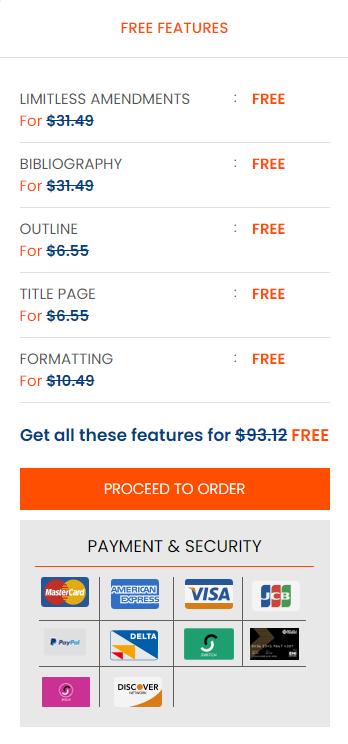Imagine that you own each of the following businesses:
Tinker’s Home Security Service (sole proprietorship) Tinker & Tailor’s Home Security Service (general partnership) Tinker & Tailor’s Home Security Service (LP) Tinker & Tailor’s Home Security Service, Inc. (corporation) Tinker & Tailor’s Home Security Service, LLC (LLC)
· The businesses are being sued for breach of contract. Create a matrix that lists each business, and compare and contrast your personal liability exposure as an owner as a result of the lawsuit.
· For each business entity, analyze how you might limit your liability exposure as an owner.
· Describe a business that you may own some day or that you currently own. (Even if you never plan to own a business, pretend as if you will do so for the purposes of this assignment.) Examine the best business organizational form for the business that you have described, including in your examination personal liability exposure, management, taxation, and ease of formation.
Submit a four- to five-page paper (not including title and reference pages). Your paper must be formatted according to APA style as outlined in the approved APA style guide and you must cite at least three scholarly sources.
Grading Rubric:
Total Possible Score: 10.00
Creates a Liability Matrix
Total: 3.50
Distinguished – Creates a comprehensive matrix comparing and contrasting personal liability exposure as an owner.
Proficient – Creates a matrix comparing and contrasting personal liability exposure as an owner. The matrix is slightly underdeveloped.
Basic – Creates a partial matrix comparing and contrasting personal liability exposure as an owner. The matrix is underdeveloped.
Below Expectations – Attempts to create a matrix comparing and contrasting personal liability exposure as an owner; however, the matrix is significantly underdeveloped.
Non-Performance – The liability matrix is either nonexistent or lacks the components described in the assignment instructions.
Analyzes How to Limit Personal Liability Exposure for Each Business Entity
Total: 2.50
Distinguished – Offers a complete analysis on how to limit personal liability exposure for each business entity as an owner, demonstrating a thorough understanding of the course concepts.
Proficient – Offers a mostly complete analysis on how to limit personal liability exposure for each business entity as an owner, demonstrating a sufficient understanding of the course concepts.
Basic – Offers a somewhat complete analysis on how to limit personal liability exposure for each business entity as an owner, demonstrating a rudimentary understanding of the course concepts.
Below Expectations – Offers an incomplete analysis on how to limit personal liability exposure for each business entity as an owner, demonstrating a lack of understanding of the course concepts.
Non-Performance – The analysis on how to limit personal liability exposure for each business entity is either nonexistent or lacks the components described in the assignment instructions.
Describes Current or Future Business Formation and Examines Best Organizational Form
Total: 2.00
Distinguished – Thoroughly describes the business formation and examines the best organizational form, providing detailed and specific examples of personal liability exposure, management, taxation, and ease of formation. Expertly applies course concepts.
Proficient – Describes the business formation and examines the best organizational form, providing examples of personal liability exposure, management, taxation, and ease of formation. Sufficiently applies course concepts.
Basic – Describes the business formation and examines the best organizational form, providing limited examples of personal liability exposure, management, taxation, and ease of formation. Generally applies course concepts.
Below Expectations – Attempts to describe the business formation and examine the best organization form; however, examples of personal liability exposure, management, taxation, and/or ease of formation are not included. Does not apply course concepts.
Non-Performance – The description of the business and examination of the best organizational form are either nonexistent or lack the components described in the assignment instructions.
Critical Thinking: Evidence
Total: 0.50
Distinguished – Employs persuasive information from credible sources to develop an ample analysis or synthesis of the topic. Viewpoints of experts are scrutinized thoroughly.
Proficient – Employs applicable information from credible sources to develop an analysis of the topic.
Basic – Identifies applicable information from credible sources, but may neglect the application of such information toward the analysis of the topic.
Below Expectations – Displays information from external sources, but such information may lack credibility and/or relevance. Neglects the application of such information toward the analysis of the topic.
Non-Performance – The assignment is either nonexistent or lacks the components described in the instructions.
Reading: Relationship to Text
Total: 0.50
Distinguished – Analyzes texts for scholarly significance and pertinence within and across the various disciplines, assessing them according to their contributions and consequences.
Proficient – Utilizes texts in the context of scholarship to expand a foundation of disciplinary knowledge and to raise and discover significant inquiries.
Basic – Employs texts with the intent and expectation of increasing knowledge.
Below Expectations – Approaches texts only within the context of assignment.
Non-Performance – The assignment is either nonexistent or lacks the components described in the instructions.
Written Communication: Control of Syntax and Mechanics
Total: 0.25
Distinguished – Displays meticulous comprehension and organization of syntax and mechanics, such as spelling and grammar. Written work contains no errors, and is very easy to understand.
Proficient – Displays comprehension and organization of syntax and mechanics, such as spelling and grammar. Written work contains only a few minor errors, and is mostly easy to understand.
Basic – Displays basic comprehension of syntax and mechanics, such as spelling and grammar. Written work contains a few errors, which may slightly distract the reader.
Below Expectations – Fails to display basic comprehension of syntax or mechanics, such as spelling and grammar. Written work contains major errors, which distract the reader.
Non-Performance – The assignment is either nonexistent or lacks the components described in the instructions.
Written Communication: APA Formatting
Total: 0.25
Distinguished – Accurately uses APA formatting consistently throughout the paper, title page, and reference page.
Proficient – Exhibits APA formatting throughout the paper. However, layout contains a few minor errors.
Basic – Exhibits basic knowledge of APA formatting throughout the paper. However, layout does not meet all APA requirements.
Below Expectations – Fails to exhibit basic knowledge of APA formatting. There are frequent errors, making the layout difficult to distinguish as APA.
Non-Performance – The assignment is either nonexistent or lacks the components described in the instructions.
Written Communication: Page Requirement
Total: 0.25
Distinguished – The length of the paper is equivalent to the required number of correctly formatted pages.
Proficient – The length of the paper is nearly equivalent to the required number of correctly formatted pages.
Basic – The length of the paper is equivalent to at least three quarters of the required number of correctly formatted pages.
Below Expectations – The length of the paper is equivalent to at least one half of the required number of correctly formatted pages.
Non-Performance – The assignment is either nonexistent or lacks the components described in the instructions.
Written Communication: Resource Requirement
Total: 0.25
Distinguished – Uses more than the required number of scholarly sources, providing compelling evidence to support ideas. All sources on the reference page are used and cited correctly within the body of the assignment.
Proficient – Uses required number of scholarly sources to support ideas. All sources on the reference page are used and cited correctly within the body of the assignment.
Basic – Uses less than the required number of sources to support ideas. Some sources may not be scholarly. Most sources on the reference page are used within the body of the assignment. Citations may not be formatted correctly.
Below Expectations – Uses inadequate number of sources that provide little or no support for ideas. Sources used may not be scholarly. Most sources on the reference page are not used within the body of the assignment. Citations are not formatted correctly.







